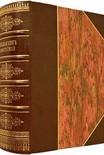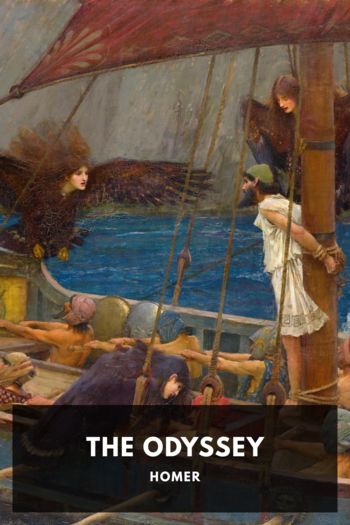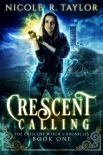The Bootlegger, Clive Cussler [black books to read TXT] 📗

- Author: Clive Cussler
Book online «The Bootlegger, Clive Cussler [black books to read TXT] 📗». Author Clive Cussler
During the warm and pleasant Gulf Stream sail north, Ling Ling’s crew worked on deck. The contents of twelve thousand bottles were stretched—doubled to twenty-four thousand—by mixing the authentic Haig & Haig with grain alcohol and distilled water and adding tea for color. They pasted counterfeit labels that guaranteed the contents on the extra bottles and sealed them with corks boiled in tea to make them look old. Then they repackaged the bottles in ham-shaped burlap bags holding six each, padded with straw, for ease of handling.
Ling Ling arrived off Fire Island on a dark night when the Coast Guard cutter CG-9 was picketing the schooner Aresthusa, steaming circles around it to keep taxis from picking up booze. A few miles away, flat-bottom boats slipped alongside Ling Ling. They loaded a thousand “hams” and sped to Fire Island, keeping a sharp eye peeled for “Prohibition Navy” patrols and for hijackers. Approaching the beach, they waited for the lights of a foot patrol to pass by. Then they landed in the surf, several miles east of the Blue Point Coast Guard Station.
The hams of Haig & Haig were loaded into carts that men trundled across the narrow island on a boardwalk laid in the soft sand. Fishing boats with oversize engines raced them five miles across Great South Bay and up an unlit channel and into a narrow creek. Cars and trucks were waiting at a dock just beyond the bright lights of a rambling wood-frame hotel. Music and laughter drifted across the marsh from which the creek had been dredged.
The Haig & Haig was quickly moved off the boats into the cars and trucks. The hotel’s handyman and dishwasher helped with the loading and were rewarded with a bottle each. Farm trucks, laundry trucks, and milk and grocery vans hurried off in various directions. Some small cars followed, Fords and Chevrolets with hidden compartments for their owners to smuggle a dozen bottles.
Last to leave were the big cars driven by professional bootleggers. Buicks, Packards, and Cadillacs—with seats removed to make more room for the Haig & Haig and with heavy-duty springs added to carry and conceal the extra weight—formed a convoy on the Montauk Highway and headed west toward New York City, seventy miles away.
The two-lane, all-weather road was dark. The towns it passed through were small, consisting of little more than a white church and a shuttered general store or filling station. They drove fast with their lights off, trusting to a starry sky and a sliver-thin moon.
A town constable and two Prohibition officers spotted the convoy and gave chase in a Ford. The bootleggers in the Buick that was protecting the rear of the convoy saw their headlights.
“Cops?”
“Hijackers?”
Either way, they weren’t stopping.
The Prohibition officers started shooting their revolvers.
“Hijackers!” shouted the bootleggers.
“Hold on!” The driver stomped hard on the Buick’s four-wheel brakes. The car stopped abruptly. The Ford, equipped only with two-wheel brakes, skidded past, the officers shooting. The Buick’s occupants, convinced that the cops were hijackers, opened fire with automatic pistols, wounding the constable.
Ahead lay Patchogue, a fair-size town, with a lace mill, streetlamps, and a business district along the highway, which was renamed Main Street as it passed through. The Women’s Christian Temperance Union had called an emergency meeting to denounce the Suffolk County sheriff for failing to arrest the bootleggers who were racing across Long Island nightly. The meeting was running late. The guest speaker—a wealthy duck farmer and a leading light in the Ku Klux Klan, which had declared war on rumrunners and bootleggers—was likening the sheriff to “an un-American Bolshevik,” when he was interrupted by a telephone report that an auto chase had resulted in the murder of a constable.
“Men!” bellowed the duck farmer. “If the sheriff won’t stop ’em, we will!”
He led a citizens’ posse into the street to ambush the bootleggers’ autos. The volunteer fire department stretched their hook and ladder across the highway.
• • •
THE BOOTLEGGERS, fearing more trouble in a larger, better-lit town, and still fifty long miles from the city, pulled their cars to the side of the road and sent a scout ahead. He reported that the fire department had blocked the highway and citizens were arming themselves with squirrel guns. The drivers turned to the boss—a former stickup man from Brooklyn who had put up the cash on behalf of associates there to buy the Haig & Haig from the fishermen—and hoped he had a plan.
His name was Steven Smith. But his men and the New York police called him Professor Smith, because he was always thinking and could usually be counted upon to come up with some way out of a fix like this one.
“Does the town have a church?” the Professor asked.
“A whole bunch,” said the scout.
Professor Smith chose one a distance from Main Street and sent two of his cousins to splash gasoline on the front steps and set it afire. Flames leaped to the steeple. When the fire department ran to put it out, and the citizens followed to watch, three Buicks, a Cadillac, and a Packard raced on toward New York with their Haig & Haig.
Hours later, the Brooklyn bootleggers finally felt close enough to New York to sigh in relief. Almost home. Less than a mile to the garage that the Professor had rented under the Fulton Street Elevated.
• • •
MARAT ZOLNER had a five-ton Army truck that had been modified with a bigger motor and pneumatic tires. When fully loaded, it still wouldn’t top thirty-five miles an hour, but whoever chased it would have to contend with five armed men wearing blue uniforms in the Oldsmobile behind it.
“What’s taking





Comments (0)